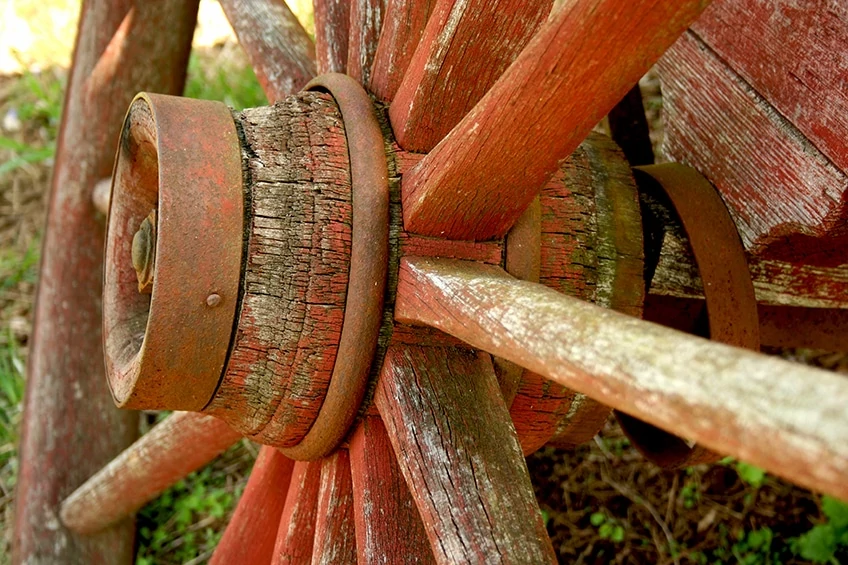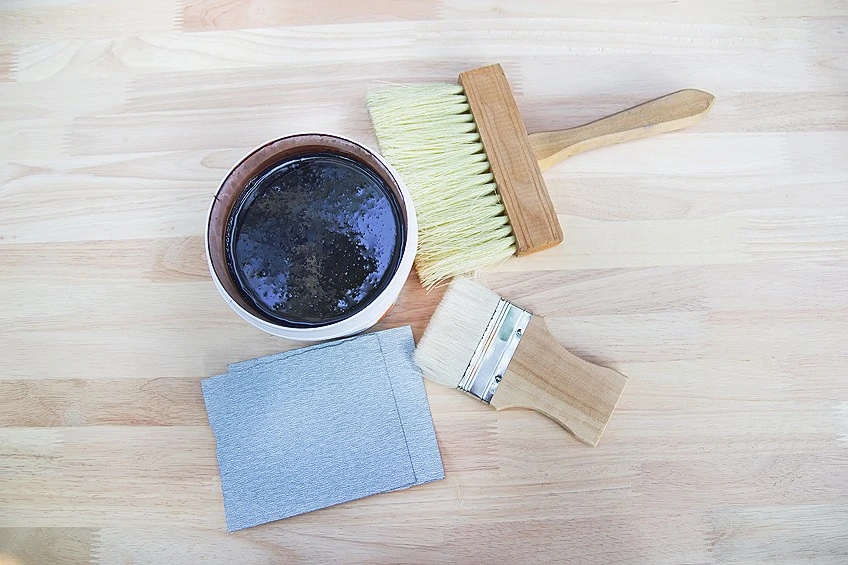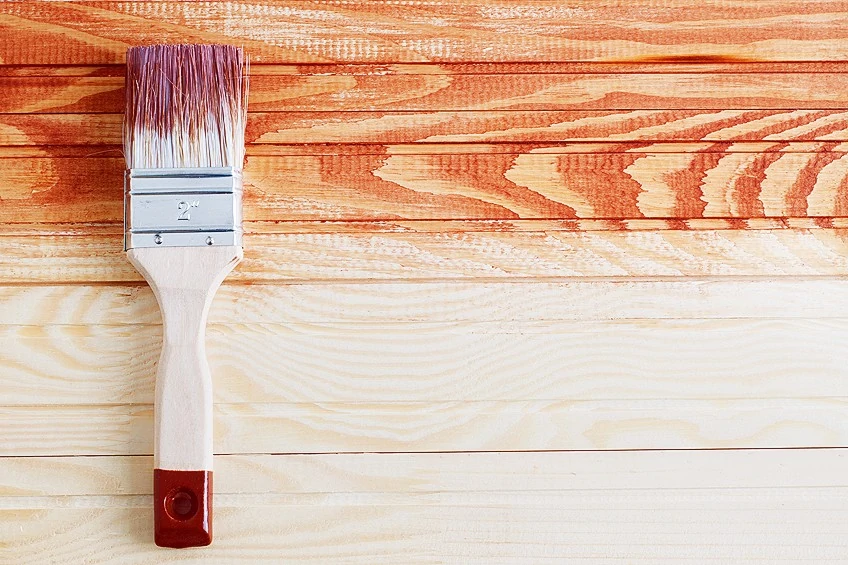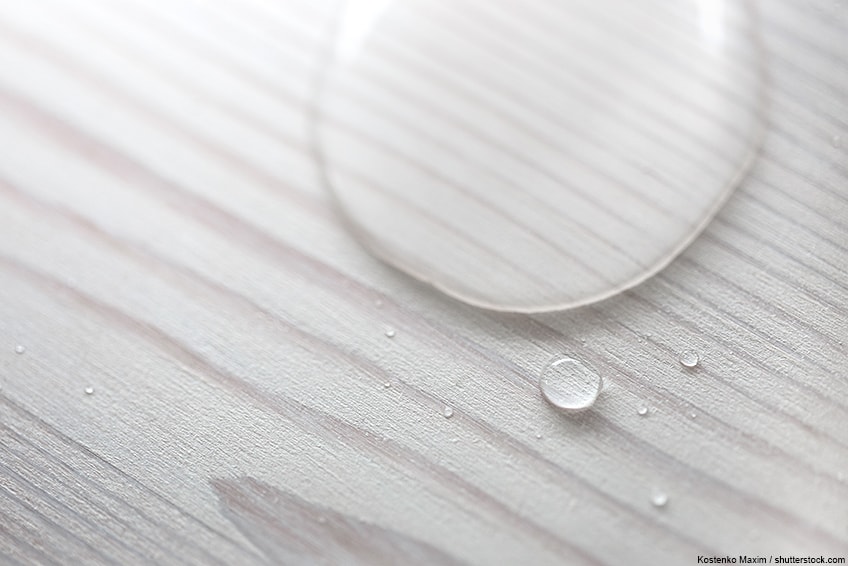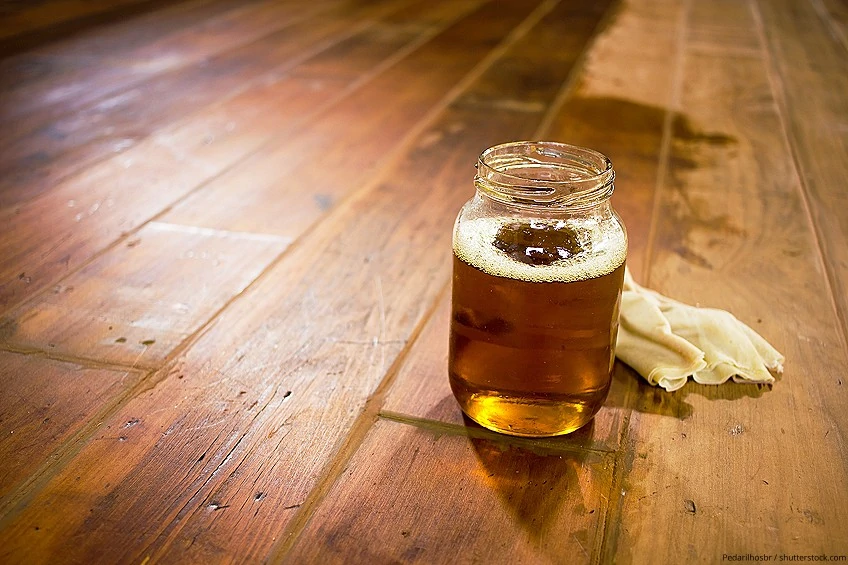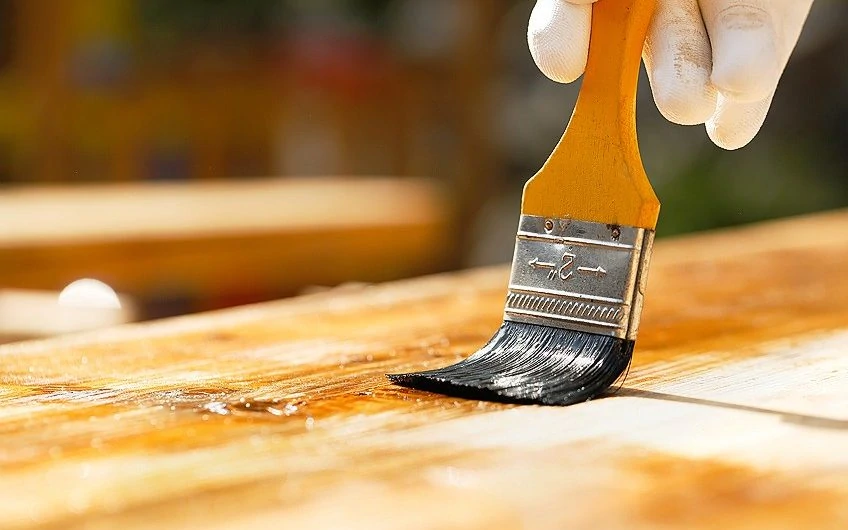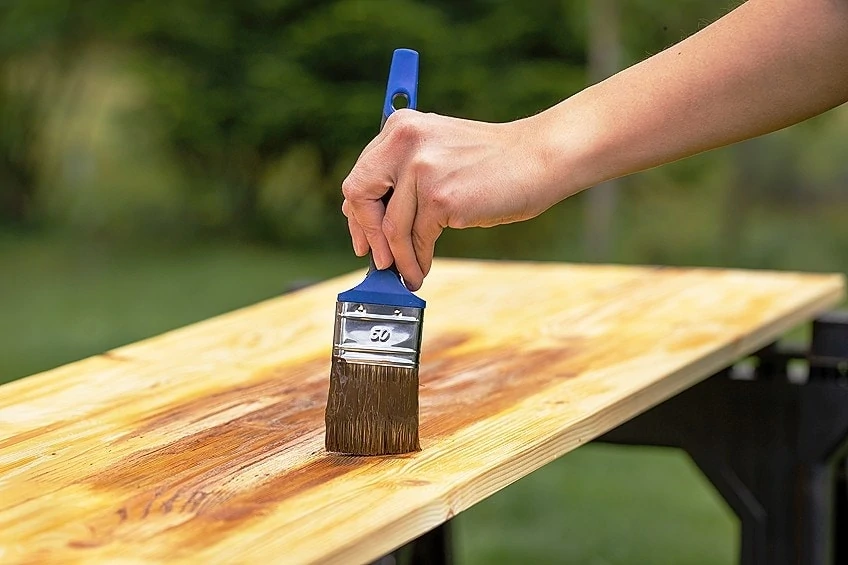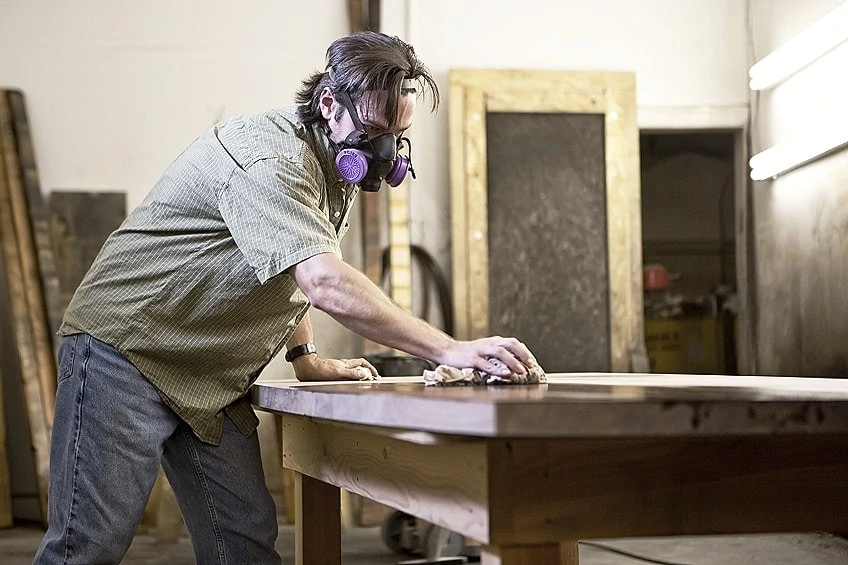Best Waterproof Wood Finish & How to Waterproofing Wood
This post may contain affiliate links. We may earn a small commission from purchases made through them, at no additional cost to you. You help to support resin-expert.com
Inside or outside, wood is always one of the most beautiful materials to use around the home. From floors to furniture, wooden surfaces offer a unique natural appeal that looks as good as it is practical. The only problem is that wood, when untreated, can be easily affected by moisture, sunlight, heat, and daily wear and tear. Finishing and waterproofing wood is very important if you want to preserve and protect your precious wood for a long lifespan. If you are interested to know how to waterproof wood, we will explore the topic in detail below.
Table of Contents
Why is Waterproofing Wood Important?
The first thing to understand is the difference between water-resistance and waterproofing. If the wood is water-resistant, it will be able to resist a limited amount of water/liquid. This will help to protect it from small spills which can easily be cleaned up. If water-resistant wood is constantly exposed to water though, it will soak into the wood and cause lasting damage.
A waterproof wood finish creates a tough surface that water just cannot soak into. Here there is no risk for water penetration. Waterproofing wood is used on things like boats or decks that experience prolonged contact with water. Water-resistant wood will work for things like kitchen counters or bathroom cupboards.
Wood is a porous material, so any moisture that penetrates into wood will be absorbed. This will lead to a damaged wood structure. Of course, this is something that differs between different types of wood. If you plan on having any wood outdoors, then it should have some kind of treatment. Otherwise, it will eventually warp, crack, discolor, or rot.
Products that offer the best waterproof wood finish usually have other benefits too. This includes things like UV resistance, and protection against scratches, mold, or any other potential threats to wood. Knowing how to waterproof wood is important for extending its lifespan and appearance.
However, this doesn’t make the wood completely invincible to the elements. You will still have to regularly maintain finished wood to keep it at its best.
How to Waterproof Wood?
You know how important it is to protect and seal wood that is used outdoors, so now the question is how to waterproof wood? There are various products available that can be used to provide a waterproof wood finish. First, you will need to establish whether you will be using the wood indoors or outdoors, and what the extent of water exposure will be.
Then you can choose the best waterproof wood finish based on your specific needs. Knowing how to weatherproof wood will provide a longer lifespan for the wood, as well as a better appearance.
Oil Finish for Waterproofing Wood
Using a wood oil finish is one option for waterproofing wood. There are many different wood oil options available. The kind of oil that you choose should be based on the type of wood that you are working with. Ome good and popular wood oil options include linseed oil and tung oil for general use.
Beyond pure oils, you can also get wood oils that are combined with mineral spirits and polyurethane. This blend helps to speed up the drying time and remove any tackiness from the finish. Wood oil is easy to apply and will help to provide a rich finish that enhances the natural beauty of the wood. This is a good option for many wood surfaces – particularly furniture and indoor surfaces. Some of the advantages and drawbacks of using wood oil are listed below.
Pros
- Oil fills in any cracks and dries hard
- The oil penetrates deep into the wood
- A natural solution for finishing wood
- Restores and maintains the natural aesthetic of the wood
- Easy to work with and apply
Cons
- Doesn’t provide complete waterproofing
- Requires fresh applications every couple of months
- Oil doesn’t provide a glossy, clear finish as varnish does
Waterproof Sealant for Wood
Waterproof wood sealers are available in a variety of different forms. Some of the most popular products include lacquer, polyurethane resin, and varnish. Applying a waterproof wood sealer can be done with a paintbrush, or sprayed with a paint sprayer. Before you apply a coat of sealant, the surface of the wood should be prepared. This includes sanding it down so that the wood is completely bare. You can then add a number of sealant coats until the perfect finish is achieved.
Different sealers contain different ingredients, but they are all chemically formulated. This means that you will want to take a few safety precautions before working with them. Try to wear gloves, protective goggles, and even a respirator mask when applying chemical sealants. Its also always best to work in a well-ventilated environment to avoid inhaling the fumes.
As there is quite a wide range of different waterproof wood sealers, choose a product that is specifically formulated for your use. For example, you can get a special waterproof sealant for wood decks, marine wood, furniture, fences, and so on.
Outdoor wood sealant should also be UV enhanced for protection against the sun. When looking into how to Cwood with a sealant, a marine option is usually best. This is because it has waterproofing and UV-resistant properties.
Below are some pros and cons of using a waterproof wood sealer.
Pros
- Offers quality water-resistance
- Easy to dry
- Gives the wood surface a rich color
- Easy to maintain
- Can also offer UV protection
Cons
- Often made up of harmful chemicals
- They can be difficult to clean up
- Before dried they produce fumes – so good ventilation is required when working with these products
- Some sealants will yellow over time
Waterproof Sealant-Stains
Using a combination sealant-stain is another good option when figuring out how to waterproof wood. These products offer a color finish, as well as a layer of waterproofing. These sealants are made up of binders ( oil-based, water-based, or alkyd-based), and pigments.
Depending on the look you are after, you can choose between opaque and transparent color variants with this option. This kind of sealant also dries faster than others. Just make sure that you choose an exterior or interior product based on your needs, as the properties of each differ. These sealants will require little maintenance, with a reapplication being necessary every couple of years.
Pros
- Available in a range of different colors
- Easy to apply and maintain
- Quick-drying
- Offers good protection over the wood
Cons
- The product you choose should be specifically formulated for exterior use
- Alkyd-based sealers can leave residue
Best Waterproof Wood Finish Products
Whether you are trying to figure out how to waterproof wood for bathrooms, outdoor decks, or furniture, there is a wide range of products available. We have chosen three of the best waterproof wood finish products below to help you with a range of different projects.
Overall Best Waterproofing Wood Sealer: RUST-OLEUM Marine Spar Varnish
This oil-based wood sealer is a fantastic option for a variety of outdoor applications. This durable product offers one of the best waterproof wood finishes, but it is also UV and chemical resistant.
- Ideal for use on exterior wood such as trim, railings and wood furniture
- Durable coating provides excellent resistance to UV, salt and mildew
- Dries to the touch in 2 hours and covers up to 150 sq. ft.
Not only is this varnish an excellent choice for maintaining the wood below and protecting it from the elements, but it also looks great. It provides a clear, marine-grade finish for all kinds of wood surfaces. You will certainly be able to get the most out of your wood with this varnish.
Pros
- Offers top-quality resistance to water, UV rays, salt, and mold
- Fast to dry
- Offers marine-grade durability that is superior to many other sealers
- Dries to a high gloss finish
Cons
- The shelf life for storage is not that great
- Drying time can vary depending on the wood and weather
Best Wood Stain/Sealer for Exterior Use: READY SEAL Exterior Stain and Sealer
The great thing about this product by Ready Stain is that it includes a sealer and stain in one form. This exterior stain dries to a semi-transparent finish and is oil-based.
- Requires no primer, may be applied using sprayer, roller or brush
- Requires no back brushing and will nerver leave runs, laps, or streaks.
- Requires no wet-line application, the product will blend itself
This is a great option for anyone that wants to add a waterproof wood finish while still maintaining the natural look of the wood grain below. You will also save some money due to this product being a stain and sealer all in one.
Pros
- Includes a sealer and stain in a single form
- No priming is required
- Easy to apply with a roller, brush, or sprayer
- Prevents streaks or runs from forming
- You can apply this product without thinning it
- Includes UV resistance and mold protection
Cons
- Can be difficult to clean up
- It should only be used over bare, unfinished wood
- Not as long-lasting as other sealants
Best Waterproofing Wood Oil: HOPE’S Pure Tung Oil
If you are after a completely natural finish to apply to wood, then consider this 100% pure tung oil. This is a solvent-free and safe product that can be used to add a good layer of protection to all kinds of wood surfaces. It sinks deep into the wood and will protect it from spills or moisture.
- Naturally drying oil for hand-rubbed, waterproof finish for wood
- Enhances natural color and produces an instant low gloss
- Penetrates deep into wood fibers and cures to a non-oily solid
Not only does this offer a good layer of resistance to the wood, but it will also enhance the natural beauty of the wood. This tung oil can be used internally or externally over a range of different wood products.
Pros
- All-natural and free from VOC’s
- Provides a moisture-resistant layer
- A fast-drying wood oil
- Offers an attractive and durable wood finish
- Will not yellow like other sealants
Cons
- More expensive than other wood oils
- Oil takes longer to dry than other types of sealant
- Water-resistant but not completely waterproof
- It will likely require three coats
How to Waterproof Wood – Applying the Finish
Applying Wood Oil
Whatever waterproof wood finish method you go for, the process is generally the same. First, make sure that you know which type of wood oil finish you want, then you can create your own mixture. This should be one part oil, one part turpentine, and a half a part apple cider vinegar. Using a mixture like this is not compulsory, but it does help the oil to stay preserved better, as well as creating a more durable finish.
Then you need to prepare the wood surface. Sand the surface down until it is smooth and wipe off any dust or dirt. You can’t apply the wood oil to wet wood or wood that is already sealed. When the wood is ready, you can start to apply the wood oil. Rub this over the entire wood surface generously with a cloth. Wipe off any extra oil and leave it to dry for at least 24 hours. You can then sand down the dried surface with fine-grit sandpaper until smooth and evenly coated.
Applying a Sealant
Applying a waterproof sealant follows a similar process. Always start by making sure you have a surface that is prepared and clean. Remove any preexisting paint or finishes, and always apply the sealant straight onto bare wood.
Solvent-based products are best applied with a brush, and some sealants are also suitable to be used in a sprayer. If you are working with a harder wood, you can add fewer coats – sometimes even a single coat for very hardwoods. If working with soft wood, then you will need to do more coats (two or three usually).
As each sealant is made different, you should always check out the specific product guidelines first. Unlike oil, excess stain sealer does not need to be removed as it will end up soaking into the wood
How to Waterproof Wood for Bathrooms
Learning how to waterproof wood for bathrooms is not too difficult a process. Just like sealing any surface, always make sure that everything is completely clean and dry first. If possible, take the wood out of the bathroom to dry under the sun.
Try to apply the waterproof wood sealer at room temperature for an even drying process. If you are unable to apply the sealant to the wood outside, then try to get as much airflow into the room as possible. These products often have strong fumes, so wearing a respirator mask is also a good idea.
How to Waterproof Wood Outdoors
Outdoor wooden surfaces can damage easily. You will notice them cracking, peeling, or warping under the weather. This is a sign that they need some attention and should be waterproofed before the next season of rainfall arrives.
The first thing is to actually make sure that the right wood is being used. Different woods have varying degrees of hardness and durability. For exterior use, you will want a wood that is suitable for the outside elements. Ready-made outdoor furniture should be constructed from more resilient wood types. Buying the appropriate wood here may be more expensive, but it will save you money over the long run when it comes to maintenance.
Some popular choices of wood for exterior use include cypress, redwood, and red cedar. These are all particularly suitable for standing up to harsh weather conditions.
Safety Measures
As most DIY projects go, always take the appropriate safety measures when waterproofing wood. This is particularly important when working with solvent-based products because they contain more toxic elements. Understand the product first, and know what it is that you are working with. Then, some common safety protocols to follow for sealants include:
- Wearing the right protective gear, such as gloves and goggles
- Make sure there is good ventilation and air circulation. If not, it is best to wear a respirator mask
- Be cautious with solvent-based products as they are flammable. Keep them away from heat sources and direct, intense sunlight
- Do not keep soaked rags. This could pose a potential fire threat
- Before throwing away used cloths, make sure that they have been water-soaked and properly dried
- Keep any waterproofing sealant products away from kids and animals
Frequently Asked Questions
How Long Does a Waterproof Wood Finish Take to Dry?
Different finishes dry at different rates. The weather, outdoor temperature, and humidity will also all play a part in the drying process. Oil finishes take longer to fully dry (24 to 48 hours), while sealants can dry faster. Drying times vary from 24 hours to 14 days.
Is Waterproof Sealant for Wood Long Lasting?
Waterproof finishes are designed to protect the wood in tough conditions. This means that most finishes can last for some time. The general rule of thumb is recoating every two years However, this changes depending on the wood, the finish, and the environment.
Is Wood Oil Waterproof?
Using wood oil provides water-resistance and can help to repel smaller amounts of water. However, wood oil does not provide a completely waterproof finish like you can get from a sealant.
Are Wood Waterproof Sealants Safe?
As long as you are careful when working with them, all waterproofing products will be safe to handle. Solvent-based products can be slightly toxic and should require protective wear when working with them. Always try to work in a space that is well-ventilated.
Are Interior Sealers Good for Use Outdoors?
For outdoor use, you will require a sealer that has UV protection to prevent yellowing or sun damage. Interior sealers do not provide this. If you need to use a wood sealer for outdoor areas, always make sure that it is specially formulated for exterior use.
If you wanted to know how to waterproof wood, then we hope we have answered all of your questions in the guide above. Knowing how to weatherproof wood can help you to get a much longer lifespan out of the wood. Using a waterproof wood finish is important for any surfaces that come into contact with water to avoid lasting damage.


